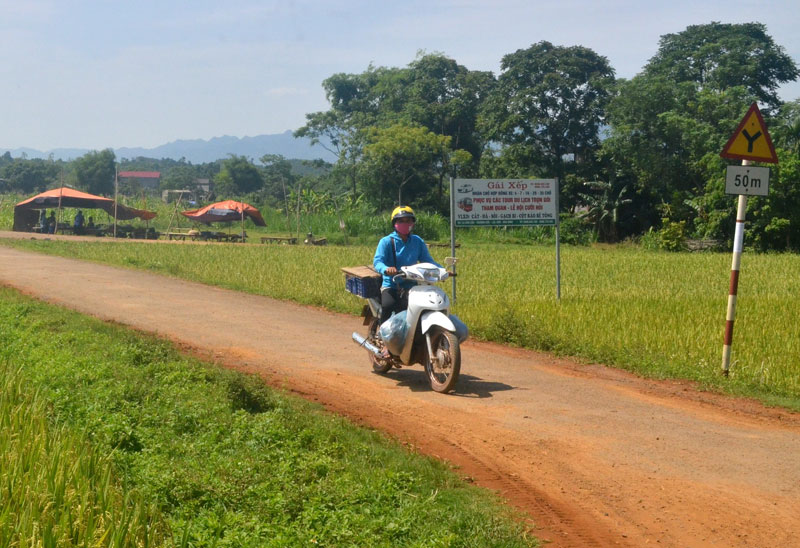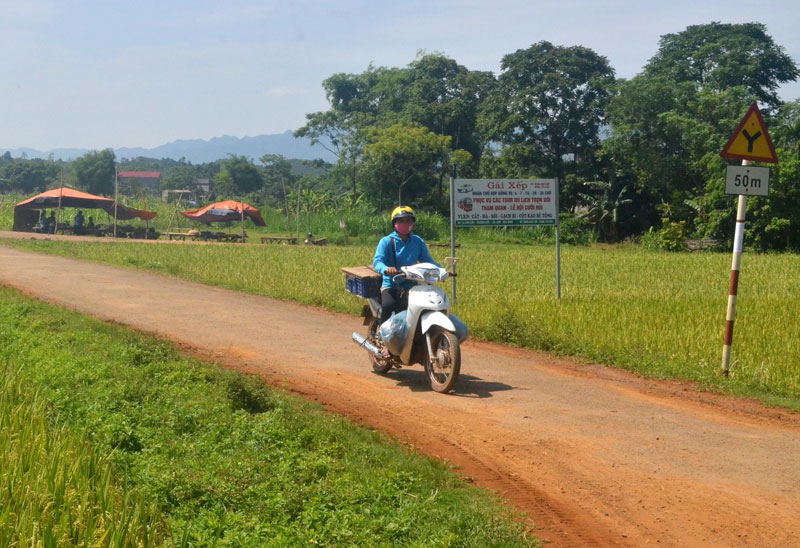
HBO – The road linking Thien village in Van Son commune and Than village in Mien Doi commune – the two extremely disadvantaged communes of Hoa Binh province’s Lac Son district, has the length of over 5 kilometres. On rainy or hot days, it takes from five to 10 minutes going through this short and beautiful road by motorcycle or a little longer by bicycle for locals who are familiar with transporting agricultural products to the district market. Seeing the road at present, many people will be surprised if they know that this road used to push a lot of locals into a miserable situation several years ago.

Van Son-Mien Doi road proves
effective, contributing to socio-economic development in beneficiary communes.
Some years ago, the provincial People’s Committee approved a Van
Son-Mien Doi
road project with a total investment of 34.2 billion VND, in which
28 billion VND came from the Japan International Cooperation Agency (JICA)’s
credit programme and 6.2 billion VND from the provincial budget. The road was
designed to have the length of over 5km and width of 5m, and covered with
three-layer asphalt, along with the roadsides, and the wastewater drainage and
traffic safety systems. Construction on the road started in 2013, and the road
was open to traffic in late June of 2016, meeting locals’ expectation of an
easy road connecting Mien Doi and Van Son communes with the district centre as
well as linking with the district’s transport system. This is a significant
"gift” to disadvantageous localities like Van Son and Mien Doi communes.
Bui Van Quyet, police chief of Van Son commune, said that, since
it was put into use, the road has contributed to changing the life of local
people. The distance between the two communes and the district centre is
shortened, and rural infrastructure is improved, thus facilitating the travel
of students and locals’ health check-ups and treatment. Notably, the new road
has also made agricultural products be sold easily, without money squeeze,
which makes locals happier and more resolved in investing in agricultural
production so as to boost poverty reduction and economic development./.
The emulation movement "Hoa Binh joining hands to build new-style rural areas” has been widely spreading, becoming a driving force that motivates the localities to renew rural landscapes and improve the material and spiritual lives of the residents. In this movement, the people play a central role-both as the main implementers and direct beneficiaries of its outcomes.
In response to the global digital revolution, Hoa Binh Newspaper is transforming itself into a modern and multi-platform media hub, blending cutting-edge technology with a restructured newsroom and a new generation of tech-savvy journalists.
Hoa Binh province’s Association of the Elderly recently held a conference to review the project on expanding the inter-generation self-help club model until 2025.
In a move to implement Resolution No. 57-NQ/TW, issued on December 22, 2024 by the Politburo, which targets breakthroughs in science-technology development, innovation, and digital transformation, the Hoa Binh provincial Department of Health has issued a plan to roll out the "Digital Literacy for All” campaign within the local health sector.
An Nghia Commune (Lạc Sơn District) is one of the communes that achieved the tha standard of the national new rural area in 2018. Entering a new development phase, the commune is now trying to meet the criteria for the advanced new rural development. With the strong political will and the public consensus, the commune is gradually overcoming the challenges to reach this goal, aiming for the sustainable development.



